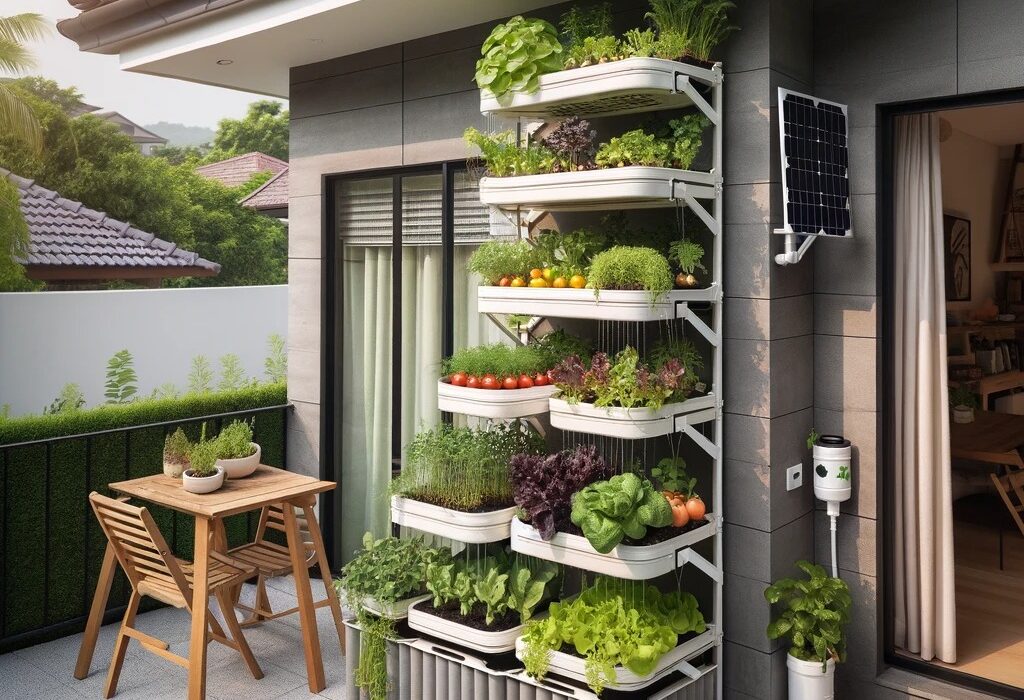Organic vegetable gardening is becoming a popular hobby for many residents of Dubai who are eager to enjoy fresh and healthy produce straight from their own backyards. However, Dubai’s unique climate and urban setting pose a variety of challenges for gardeners. we’ll dive into the common obstacles faced by those growing organic vegetable gardens in Dubai and offer practical solutions to help you achieve a bountiful harvest.
Climate Challenges in Dubai
1.High Temperatures
Dubai’s scorching summer temperatures, which can exceed 40°C (104°F), pose a significant challenge for organic vegetable gardens. High temperatures can lead to wilting, sunburn, and even the death of delicate plants.
Shade Netting: Use shade cloth or netting to shield plants from the hot midday sun, which can help lower the temperature around them.
Mulching: Spread a thick layer of organic mulch around the base of plants. This helps keep the soil moist and the roots cool.
Early Morning Watering: Water your plants early in the morning. This reduces water loss due to evaporation and ensures the roots get enough water.
2.Low Humidity
The arid climate of Dubai often results in low humidity levels, which can cause plants to dry out quickly and affect their growth.
Solution:
- Regular Misting: Mist plants with water during the hottest parts of the day to increase humidity and prevent dehydration.
- Humidity Tents: Create mini humidity tents using clear plastic sheets to trap moisture around the plants.
Nutrient Deficiency
Dubai’s sandy soil is deficient in essential nutrients and organic matter, making it less than ideal for growing organic vegetable gardens.
Solution:
- Organic Fertilizers: Regularly apply organic fertilizers like compost tea, fish emulsion, or seaweed extract to provide essential nutrients.
- Crop Rotation:Rotate your crops to avoid using up the same nutrients in the soil and to keep the soil healthy.
3. Overwatering
Conversely, overwatering can lead to root rot and other issues in organic vegetable gardens.
Solution:
- Monitor Soil Moisture: Use a soil moisture meter to check the soil’s moisture level before watering.
- Proper Drainage: Ensure that your garden has good drainage to prevent water from pooling around the roots.
4. Pest and Disease Management
Pests
Common pests like aphids, spider mites, and caterpillars can wreak havoc on organic vegetable gardens.
Solution:
- Natural Predators: Introduce beneficial insects like ladybugs and predatory mites to control pest populations.
- Neem Oil: Use neem oil, a natural pesticide, to deter pests without harming beneficial insects.
Diseases
Fungal and bacterial diseases can spread rapidly in the warm, humid environment of Dubai.
Solution:
- Crop Rotation and Diversity: Rotate crops and plant a diverse range of vegetables to prevent the spread of diseases.
- Proper Spacing: Space plants adequately to improve air circulation and reduce the risk of disease.
5. Urban Gardening Challenges
Limited Space
Many residents of Dubai live in apartments or homes with limited outdoor space for gardening.
Solution:
- Container Gardening: Grow vegetables in pots, containers, or vertical planters to maximize space.
- Community Gardens: Join or start a community garden to share space and resources with other organic gardeners.
6. Air Pollution
Urban areas can have higher levels of air pollution, which can affect plant health and growth.
Solution:
- Air-Purifying Plants: Incorporate air-purifying plants like spider plants and peace lilies into your garden to improve air quality.
- Protective Barriers: Use barriers like hedges or screens to shield your garden from pollutants.
Growing organic vegetable gardens in Dubai has its own set of challenges, but with the right methods and solutions, you can definitely grow a successful garden. By tackling issues related to the climate, soil quality, water use, pests, and space, you can enjoy fresh, homegrown organic produce.
If you’re ready to start your organic gardening journey or need expert advice to overcome these challenges, reach out to Greenlife Organic Farming. Our team is here to help you create a thriving and sustainable organic garden in Dubai.
If you’re ready to embark on your organic gardening journey or need expert advice to overcome Organic Gardening Challenges, contact Greenlife Organic Farming. Our team of professionals is dedicated to helping you achieve a successful and sustainable organic garden in Dubai.











